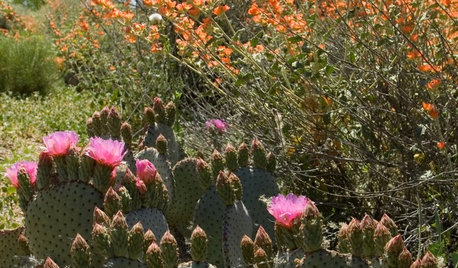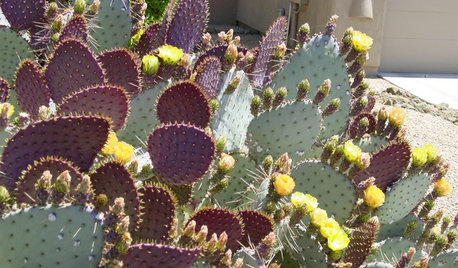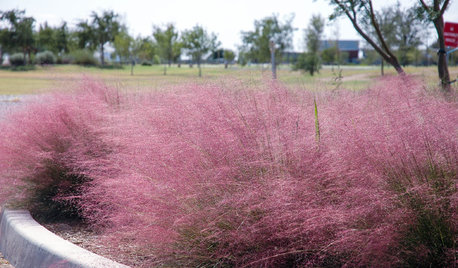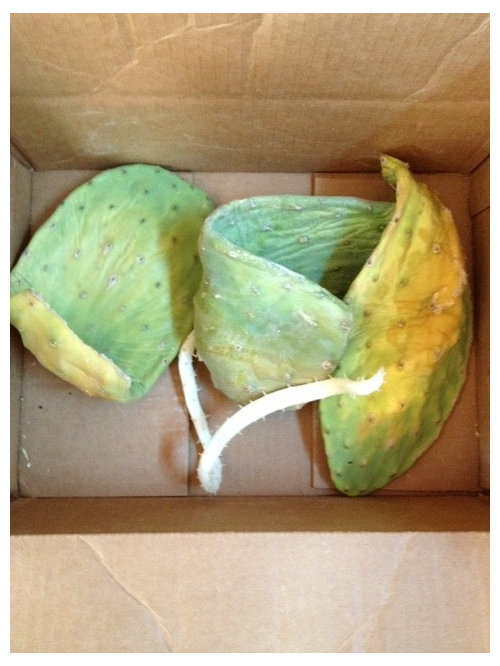Opuntia cactus root(?) grew in a cardboard box!
Tech13
10 years ago
Related Stories

GARDENING GUIDES10 Creative Ideas for Cactus and Succulent Gardens
Arrange cactuses and succulents amid salvaged treasures, against a vibrant painted wall or in terraced beds
Full Story
GARDENING GUIDESGreat Design Plant: Beavertail Prickly Pear Wows With Color
The dazzling magenta flowers of this cactus will snag your heart — just beware the bristles that can stick in your skin
Full Story
GARDENING GUIDESGreat Design Plant: Santa Rita Prickly Pear for Purple Appeal
Distinctive colored pads and yellow flowers make this cactus a favorite in Southwestern gardens
Full Story
ORGANIZINGHelp for Whittling Down the Photo Pile
Consider these 6 points your personal pare-down assistant, making organizing your photo collection easier
Full Story
NATIVE PLANTS10 Top Plants Native to the Desert Southwest
Get a thriving garden despite unforgiving conditions with these tough, unthirsty, sun-loving beauties
Full Story
GARDENING GUIDESGarden Myths to Debunk as You Dig This Fall and Rest Over Winter
Termites hate wood mulch, don’t amend soil for trees, avoid gravel in planters — and more nuggets of garden wisdom
Full Story
EDIBLE GARDENSNatural Ways to Get Rid of Weeds in Your Garden
Use these techniques to help prevent the spread of weeds and to learn about your soil
Full Story
FRONT YARD IDEASBefore and After: Front Lawn to Prairie Garden
How they did it: Homeowners create a plan, stick to it and keep the neighbors (and wildlife) in mind
Full Story
GARDENING GUIDES7 Ecofriendly Gardening Ideas That Also Cut Chore Time
Spend less time weeding, less money watering and more moments just sitting back and enjoying your healthy garden
Full Story
HOUSEPLANTS8 Essentials for Healthy Indoor Plants
Houseplants add so much to our homes — and can thrive when grown in the right conditions. Keep these tips in mind
Full Story






brandon7 TN_zone7
GreatPlains1
Related Professionals
Edmond Landscape Architects & Landscape Designers · Chattanooga Landscape Architects & Landscape Designers · Forest Acres Landscape Architects & Landscape Designers · Leawood Landscape Architects & Landscape Designers · South Elgin Landscape Architects & Landscape Designers · Addison Landscape Contractors · Americus Landscape Contractors · Coeur d'Alene Landscape Contractors · Pahrump Landscape Contractors · South Portland Landscape Contractors · Teaneck Landscape Contractors · Thornton Landscape Contractors · Markham Landscape Contractors · Vienna Handyman · Wolf Trap Handymanbrandon7 TN_zone7
Tech13Original Author
GreatPlains1
brandon7 TN_zone7